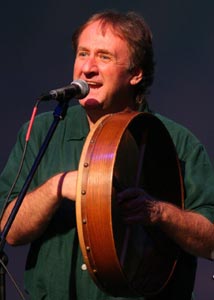I will be doing a book review today on:
Mary on Horseback
Three Mountain Stories
By Rosemary Wells
Mary on Horseback Is a book about a lady (Her name was Mary Breckinridge) who goes to school to be a nurse and then goes into the Appalachian mountains of Kentucky and helps lots of people, because, back then (in about 1923), there weren't a lot of doctors. Most of the doctors were far away and wouldn't be able to get there in time to save people. Or there would be doctors but most wouldn't be educated enough to know what they were doing. Other times there would be a "Granny woman", as they called them, who would come and treat the sicknesses and injuries with "Blackened pennies and leeches".
There were 3 stories and each told about what Mary Breckinridge did for three Appalachian families.
Here are two short summaries of two of the stories:
Mountain Medicine
This is the story of a boy whose father had broken his leg while logging. Here is what John (The boy)
told Mary when she asked him how his father got hurt:
After Breakfast Mary asks me, "How did your Pa get hurt, John?"
"Ridin' the tides" I say.
"Tides?" Says Mary. "Tell me what that means."
"Well," I say, "You know in the winter there's timber-cutting teams? They clear cut the big trees on top of the mountain. Then the River men ride the logs down the chutes."
"Chutes?" asks Mary.
"Yes ma'am. Chutes is where the water froths up mean and wild. Tides is when the water's real high and floody in the springtime. A river man rides a tree all the way from the top to the bottom of the mountain two days without stoppin'. My pa's a river man. He's good. The lumber company pays him extra. He didn't expect no accidents."
"No one ever does," Says Mary.
So after Mary comes, she helps John's Pa as best she can but then has to take him down to a train station that would take him to a hospital in Lexington. Two men put two broom sticks through the sleeves of two old coats to make a stretcher. John follows them, to the dismay of his mother and Aunt, until about noon when he gets hungry. Then he rides the rest of the way with Mary talking to her about things. He can't read or write. He can only show 2 and five with his fingers.
When they get to the train station, John says goodbye to his father then goes with Mary to her house at Wendover.
John thinks about his Pa day and night but doesn't ask about him for a long while.
Then, one day, one of the nurses at Wendover that stay with Mary said that the Doctor said that his Pa was doing fine and that he would keep his leg.
While John is at Wendover he learns to read and write and count. he learns that 12 inches equal a foot.
Mary tells John of her plan to build a hospital out by Beech Fork, near where he lives.
In August, John's Pa is walking again. They go back to their house.
John then picks out a nice big pasture out in Beech fork and picks up large white stones and lines them up going inch by inch with his ruler. He goes all the way around in a square with smaller squares and doors. He had set out Mary's plan so that someday she might see it and build it.
Though that wasn't very short, That was just one of the many things that Mary did.
Here is one more story:
How Many Stars in My Crown?
One day two twins were born to a woman, who went down with childbed fever shortly after.
Pearl's (The girl who tells this story) Pa gets the preacher for her, and the preacher said he would have to "breathe the breath of the Lord into her lungs" To keep her from dying. Though it did not keep her from leaving poor Pearl who, after her Mother's death, didn't speak. The Twins wouldn't eat or drink. They were doing poorly so Pearl's Pa takes them down to a Hospital more that a two day ride on horseback. They take along a mule for payment since they had no money.
When they got there, Pearl stayed with the nurses, and this was where she met Miss Mary. She was wheeling around in a wheel chair because she had broken her back while falling off a horse.
Pearl became great friends with Miss Mary, though she still did not speak to anyone, even Mary.
she would make friends with some of the children patients by reading books to them and humming to them. She was particularly friends with a little girl who was burnt all over because of a fire.
Soon, though, the burnt girl died.
Mary came up with a solution to this problem by ordering overalls and handing them out to the girls. The whole problem in the first place was that girls were wearing dresses while tending the fire and the skirts would catch on fire and the girls would get burnt. The boys didn't have this problem because they wore overalls. So Mary took Pearl and they rode through Kentucky handing out overalls to girls and asking mothers "Does your daughter tend your fire?".
One day Mary was too tired to hand out the overalls to one house, so She asked Pearl to do it.
Pearl boldly walked up to the house and asked "Hello Ma'am. Does your daughter tend your fire?"
This was the first time since her mother died that Pearl had talked.
~ Jessie Lawson











